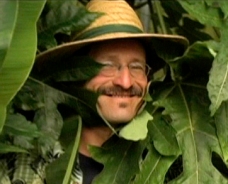Cornus nuttallii | California Flora Nursery:
Also pacific dogwood. dislikes pruning or fertilizer like water if fast draining..... I believe it drops leaves. Cool party-shady areas, with deep, rich, well-draining soil, usually at the edge of forests.
The Pacific Dogwood is a species of dogwood native to western North America from lowlands of southern British Columbia to mountains of southern California. An inland population occurs in central Idaho. Cultivated examples are found as far north as the Queen Charlotte Islands. It is a small to medium-sized deciduous tree, reaching 7-20 meters tall, often with multiple trunks and and an irregular form. The leaves are opposite, simple oval, 8-12 centimeters long and 5-8 centimeters broad. The flowers are individually small and inconspicuous, 2-3 millimeters across, produced in a dense, rounded, greenish-white flowerhead 2 centimeter diameters; the 4-8 large white "petals" are actually leafs, each leaf is 4-7 centimeters long and broad. The fruit is a compound pink-red berry about 3 centimeters in diameter, containing 50-100 small seeds; it is edible, though not very palatable.
With its spectacular white flowers, bright green leaves, beautiful autumn foliage, and attractive growth form, Pacific Dogwoods are among the more popular native California trees in landscaping applications. It's long-lived and easy to grow as long as it's planted in its natural range and in the right site type. It needs to be planted in cool, rich, deep and well draining soil, in part shade, preferably among smaller companion plants, so as it matures it can reach its branches out into direct sun. Provide occasional summer water until established, then stop all supplementary irrigation. Avoid disturbing the soil within a few feet of the trunk.

http://calscape.org/Cornus-nuttallii-(Pacific-Dogwood)?srchcr=sc5a6f9d49c1479
'via Blog this'










